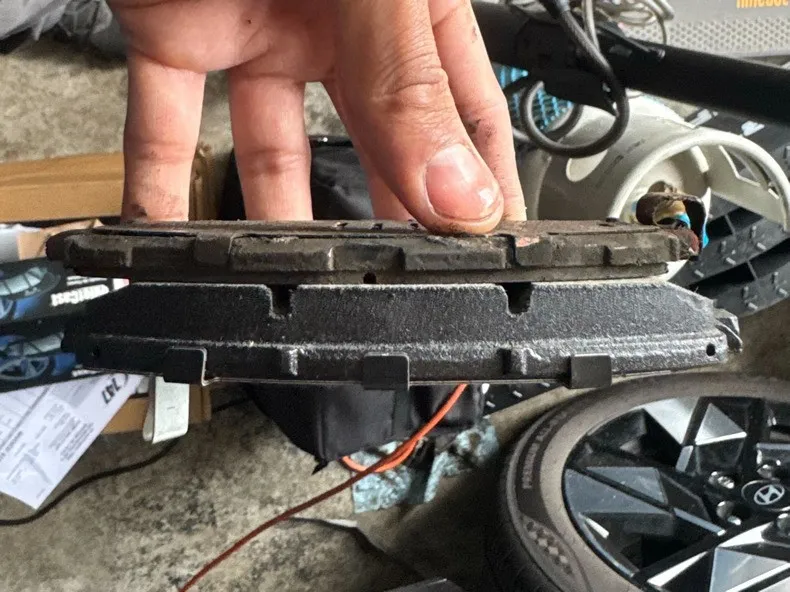5 Signs You Need New Brake Pads
July 01, 2025
Brake pads are one of the most critical components of your vehicle’s safety system. Ignoring early signs of wear can lead to rotor damage, longer stopping distances, and costly repairs.
In this guide, we’ll walk you through 5 clear signs that it’s time to replace your brake pads - especially important for Canadian drivers who face harsh winter conditions, salted roads, and stop-and-go traffic in cities like Toronto.
Your vehicle's braking system is its most critical safety feature. Recognizing the signs of worn brake pads can help prevent costly repairs and ensure your safety on the road. Below are five key indicators it's time to check or replace your brake pads.
1. Squeaky or Screeching Noises
When you apply your brakes and hear a high-pitched squeak, it's often warning you that the friction material is getting thin. That high-pitched squeaking noise you hear when braking isn't just annoying—it's a built-in warning. Most modern brake pads come with a small metal shim known as a wear indicator. When the pad wears down to a certain point, this indicator makes contact with the rotor, producing a squeal to alert the driver.
While the sound isn’t always urgent, it’s a clear message: your brake pads are approaching their service limit and should be inspected soon.
If you hear a grinding or growling noise, your brake pads may be completely worn out, and the metal backing plate is rubbing against the rotors.
This not only affects stopping performance but can cause severe damage to the rotors.
Did you know? Replacing rotors is 2–3x more expensive than pads. Catching the issue early can save hundreds of dollars.
2. Longer Stopping Distances
If your car takes noticeably longer to stop than it used to, worn brake pads may be the cause. This symptom might not be accompanied by any unusual sounds or dashboard lights, but it’s one of the most important indicators of degraded braking performance.
On average, a healthy car should come to a complete stop from 100 km/h (62 mph) in around 40 meters (131 feet). If you find your vehicle is taking 50 meters or more, it’s time to inspect the braking system—starting with the pads.
3. Brake Pad Thickness Is Below Limit
Visual inspection can reveal a lot. Most brake pads start out with about 12 mm of friction material. Manufacturers typically recommend replacement when that material reaches 3 mm or less.
For reference:
- 12 mm – New pads
- 6 mm – Good condition
- 3 mm – Service required soon
- 1 mm or less – Unsafe, replace immediately
On some European vehicles, such as BMW or Audi, sensor wires embedded in the pads will alert the car's computer when pads reach the 3 mm threshold, triggering a warning light.

4. Brake Warning Light or Sensor Alerts
Modern cars often include electronic brake pad sensors that monitor pad wear. When the sensor wire is exposed due to wear, it completes a circuit that sends a signal to your dashboard—usually illuminating a brake warning icon.
Vehicles like Mercedes-Benz, Tesla, and Volkswagen use these systems as part of their advanced driver-assistance features. While the light doesn't always mean your brakes are failing, it does indicate you’re likely below the manufacturer’s brake pad thickness limit.
5. Vibration When Braking
If you feel vibrations or pulsations through the brake pedal, it could be more than just warped rotors. Severely worn pads can create uneven contact with the rotor, leading to an inconsistent braking feel and reduced control.
Although rotor issues are a common cause, unevenly worn or contaminated brake pads (due to grease, oil, or rust buildup) can contribute to this problem. A mechanic can inspect both components during service.
Soft or Spongy Brake Pedal
Does your brake pedal feel soft or require more pressure than usual? This can indicate uneven pad wear, air in the brake lines, or even contaminated brake fluid.
Have your system inspected immediately, especially before winter, when stopping distance becomes critical.
Read more: What Happens If You Drive on Bad Rotors and How to Spot the Problem Before It Gets Worse?
Visual Signs of Wear (Pad Thickness Check)
Look between the spokes of your wheels. If the brake pad thickness is less than 3–4mm, it’s time to replace them.
Bonus Tip: Look at the Brake Dust
Reduced brake dust on your wheels might seem like a good thing—but it could indicate the pads are too worn to generate friction, or the pad material is disintegrating. Healthy brake pads, especially organic or semi-metallic ones, usually create a fine layer of grey or black dust on your rims.
Maintaining Brake Pad Health
Routine inspections every 10,000 to 15,000 kilometers, or during tire rotations, can help identify brake pad issues early. Many repair shops include brake checks as part of seasonal service packages. If you're unsure about the thickness or feel of your brakes, have them looked at—even a quick visual inspection can prevent expensive repairs later.
Keep in mind that driving habits matter too. In urban areas like Toronto stop-and-go city traffic wears out pads much faster than steady highway driving. Heavy braking, towing, and mountainous terrain can all shorten the lifespan of your pads significantly.
If you're hearing squeaky brakes or noticing any of these signs of worn brake pads, it's time for a closer look. Don't wait until stopping becomes an emergency. Your brakes are your car's last line of defense.


